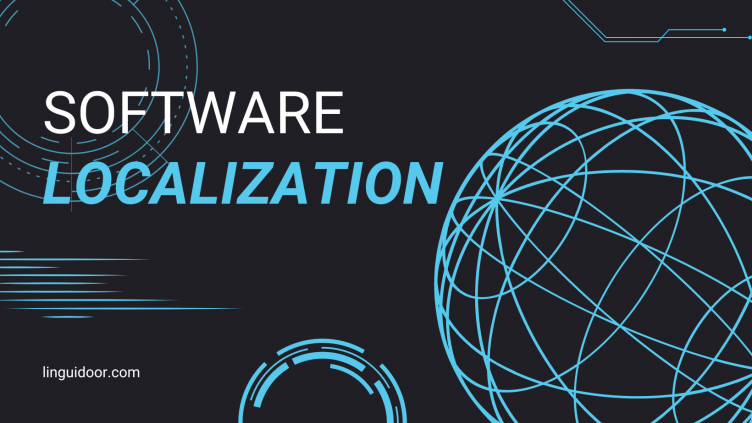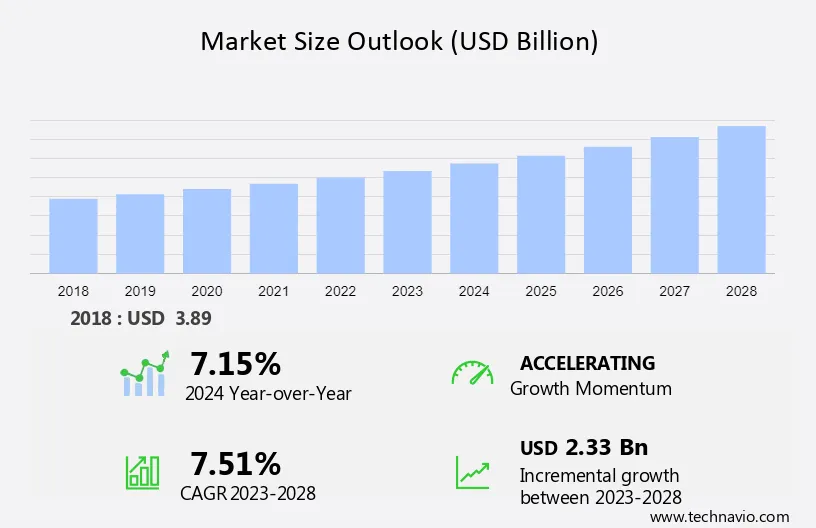The 7 Biggest Challenges of Software Localization (and How to Solve Them)

When it comes to software and technology, we all look forward to a great user experience. And what could be better than software that not only speaks your language but also adapts to your cultural and linguistic nuances? A software that simplifies complex technical jargon and makes your digital journey smoother and more enjoyable. For achieving a seamless user experience, software localization is important!
Today, more and more developers are leveraging the potential of software localization services to tailor their software to the language, culture, and region of their users. In fact, according to a recent report by Technavio, the global software localization market is estimated to grow at a CAGR of 7.51% between 2023 and 2028, with a phenomenal USD 2.33 billion increase in market size.

Source: Technavio
By adapting the content, documents, design, and even the user interface in the language spoken by users, software localization makes way for a seamless, borderless user experience. It facilitates better user understanding, quicker engagement, and greater satisfaction, leading to quick adoption and a globally accessible software product.
While software localization is the need of the hour and is like turning your tech wizard into a globetrotter, it’s downright challenging. Making a software ‘speak’ different languages is not easy. And with so many codes and software technicalities, it can be tricky to get everything right!
Here are the top 7 challenges that developers face during software localization and how you can overcome them with some strategy and a little expertise.
1. Catering to Audiences with Diverse Cultural Preferences
Localization is more than just language translation. When you localize your software, you need to make sure you are choosing the appropriate regional version of the language, while keeping the cultural references effective and respectful.
What works well in one culture may not resonate with another. For example, colors, symbols, icons, and even gestures can have different meanings in different cultures. While white symbolizes purity in Western cultures, it represents mourning in some Asian cultures. Overlooking these nuances can lead to misunderstandings and can even alienate your target audience, rather than making them your ardent fan.
Solution: Partner with a professional software localization service provider who follows a proven software localization process that weeds out any linguistic inaccuracies and cultural faux pas. Make sure the team performs a thorough linguistic QA to ensure your software aligns with cultural norms and expectations in each target market.
2. Adapting Language Nuances, Expressions & Context
With localization, simply translating words is not enough. Not only do you need to understand the nuances and expressions unique to each language, you also have to make sure that the translated content is contextually right. After all, different words can have different meanings in different languages and simply translating the word can lead to misunderstandings or even offense.
For example, while ‘Add to cart’ in English means to complete a purchase or transaction, a direct translation of this phrase into another language may not convey the same meaning. In French, for instance, “Check Out” would be translated as “Vérifier” or “Regarder,” which means to verify or to look at, respectively, and they don’t carry the specific e-commerce connotation of completing a purchase.
Solution: Professional translators are not only fluent in the target language but also understand the context and cultural implications of the content. They can help you stay true to the language nuances of your target market. However, make sure to provide them with reference materials, annotations, and in-text comments to ensure accurate and culturally relevant translations. This will help them know the meaning, depth, and intricacies of each phrase, and will significantly reduce the probability of mistranslation.
3. Lack of Software Internationalization (i18n)
If you want your software to go global, it is important to embrace software internationalization practices early on. Failing to apply them while designing the software can be a big setback and can lead to a lot of technical debt. Internationalization involves designing software with the flexibility to accommodate various languages, character sets, currencies, date formats, and cultural conventions.
For example, your software application might have hardcoded text strings that represent date formats in a specific language. In such cases, localizing them for a global audience could get challenging.
Solution: Prioritize i18n best practices from the early stages of software development:
- Use Unicode (UTF-8) for text encoding to support multilingual content and diverse character sets.
- Separate user interface elements from content using resource files or localization frameworks. This facilitates easy translation and adaptation.
- Implement dynamic layout and design techniques that can adjust to different text lengths, languages, and cultural preferences.
- Support locale-specific formats for dates, times, currencies, and numerical data to ensure consistency and accuracy across regions.
- Conduct internationalization testing to fix issues related to language support, text display, or cultural sensitivity.
4. Dealing with Code Complexity
Handling codes can be rewarding and frustrating at the same time. When it comes to software localization, a lot of things can go wrong on the technical front. Files can get corrupted, myriad bugs and errors undermine the system, and suddenly the entire software can stop working.
Text expansion, for example, is a common challenge in software localization that occurs due to the varying lengths of translated text as compared to the source language. This can lead to issues such as overlapping text, text truncation, or layout problems. Additionally, some languages like Arabic, Hebrew, or Persian are written right-to-left, which poses another set of challenges as different language flows can alter the overall design of the page and user experience. Also, encoding and character set issues can arise when handling different languages, which can lead to display errors or garbled text.
Solution: To address these challenges, developers should implement robust code management practices. You must use localization-friendly programming techniques to deliver error-free products. Leverage the QA capabilities of experienced localization professionals to identify and resolve code-related complexities efficiently.
5. Localization Quality Issues
Localization quality issues can significantly impact user experience and brand reputation. When text overflows buttons or placeholders are misconfigured, it creates a disjointed and unprofessional interface. Identifying and rectifying these errors before production is crucial, as releasing a product with localization mistakes can lead to negative customer sentiments and lost revenue.
But fixing these problems means checking through all the files one by one, without the guarantee that you will be able to find everything.
Solution: Implement automated localization QA (quality assurance) tools that can scan and flag potential issues in real-time. These intelligent software localization tools check for text overflow, glossary adherence, and placeholder accuracy, reducing the manual effort required for quality assurance.
With automated localization QA tools, you can reduce the number of errors while ensuring consistency and compliance with your brand voice and terminology.
6. Time and Resource Constraints
Localization projects can be complex and time-consuming. They demand constant, uninterrupted coordination among multiple teams, translators, and stakeholders. You need to efficiently manage timelines, budgets, and resources to meet project deadlines and deliver quality localized software. Managing everything single-handedly can sometimes get too challenging.
Solution: Modern project management tools and agile methodologies can help solve the problem. To streamline localization workflows,
- Establish clear communication channels and collaboration platforms for stakeholders and localization teams.
- Prioritize tasks and allocate resources efficiently based on project requirements and priorities.
- Consider outsourcing non-core localization tasks to an experienced localization service provider to optimize resource utilization and accelerate project timelines.
7. Meeting Legal and Regulatory Requirements
Different regions have different legal and regulatory requirements. Adhering to them is the rule of the trade. From data privacy to consumer protection to intellectual property rights and localization mandates, you need to take care of it all to avoid legal risks, fines, and reputational damage.
Solution: Work closely with legal experts and follow software localization best practices to ensure your software meets all regulatory requirements. They can help you develop clear policies and procedures for data handling, privacy protection, and user consent and stay per local laws. A little help can go a long way in helping you stay protected.
Localize Your Software Like a Pro!
If software localization looks like a handful, it surely is! But you don’t have to do it alone.
Partner with us and watch your software thrive on a global stage. We offer the best software localization services, ensuring ensure your apps, software, and digital platforms resonate seamlessly with diverse audiences worldwide. Our tailored localization and translation services and solutions are available in 65+ languages and help you effortlessly enhance your user experience and expand your global reach.

Made up your mind yet?
Empower your globalization goals today!




